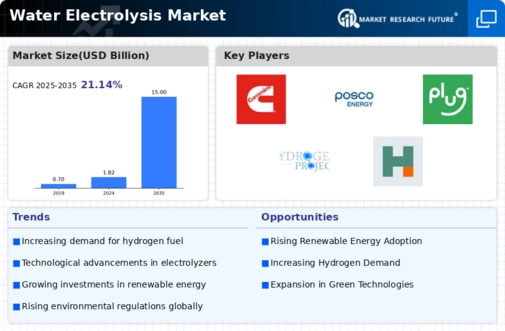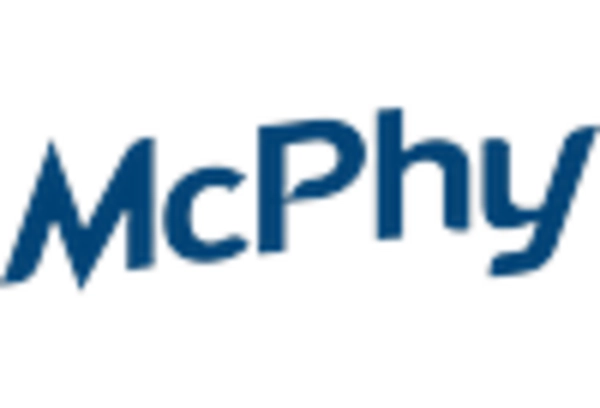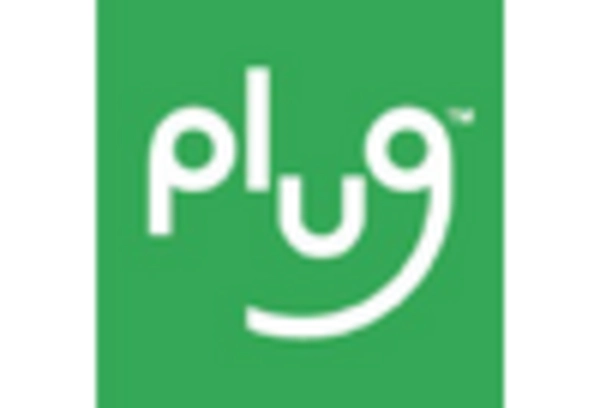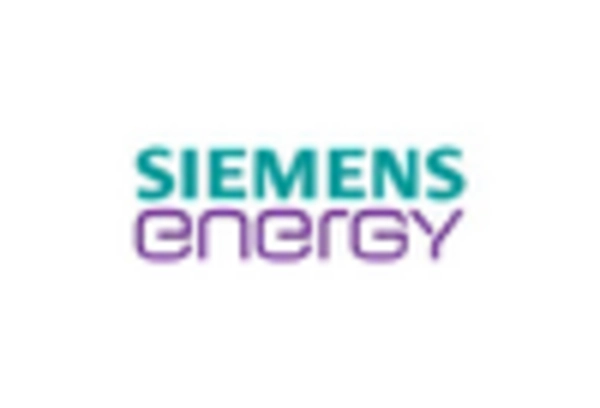Market Trends
Introduction
As we enter the year 2024, the water electrolysis market is expected to witness significant changes, driven by the confluence of macroeconomic factors such as the rapid technological development, the growing pressure on the government to reduce carbon emissions and the changing preferences of consumers towards the sustainable energy sources. In the meantime, the cost of hydrogen production has been reduced by technological advancements in water electrolysis. Along with this, the governments are promoting the clean energy, and the hydrogen energy industry has also been stimulated. In addition, the increasing demand for green energy alternatives from consumers is driving the industry to adopt hydrogen as a core energy source. These are strategic trends for the industry, and not only are they the drivers of competition, but they also influence the investment decisions and the long-term development of the industry.
Top Trends
-
Increased Government Support for Hydrogen Initiatives
The governments of the world are now increasing their investment in hydrogen technology, and the European Union has formulated a hydrogen strategy aiming to produce 10 million tons of hydrogen per year from renewable sources by the year 2030. Moreover, a growing number of countries are now calling for the development of hydrogen energy to reduce their dependence on fossil fuels. Germany, for example, has earmarked a total of nine billion DM for hydrogen projects in the framework of its National Hydrogen Plan. In practical terms, this means a greater commitment to research and development, leading to improved electrolysis processes. -
Technological Advancements in Electrolysis Efficiency
In the meantime, new developments in the field of electrolysis, such as the development of proton-exchange membranes, have radically improved the efficiency of the process. Among the companies pushing the limits of performance are Siemens AG and the French company Électricite de France. This is expected to further reduce the cost of operation and make hydrogen production even more attractive. Further improvements are expected as the integration of renewable energy sources increases the overall energy efficiency. -
Growing Demand for Green Hydrogen
Demand for green hydrogen is being created by the shift to sustainable energy sources and the production of hydrogen by the electrolysis of water using renewable energy. By 2025, it is expected that the green hydrogen market will reach 5 million tons. The leading companies are investing heavily in green hydrogen projects, with Shell pledging to build large-scale production plants. The trend is reshaping the supply chain and generating new business models based on sustainable development. -
Integration with Renewable Energy Sources
In the field of electrolysis of water, it is now becoming a common practice to combine it with wind and solar energy, which in this way can provide an effective energy storage system. For example, Enel Green Power is developing projects in which the energy of the sun is combined with hydrogen production by means of the electrolysis of water. This integration can increase the stability of the grid and be an effective solution for energy storage. This will help to reduce the dependence on fossil fuels and the reliance on centralized energy production. -
Expansion of Hydrogen Infrastructure
Besides the establishment of hydrogen refueling stations and hydrogen distribution networks, the establishment of hydrogen refueling stations and hydrogen distribution networks is the most important thing for the growth of the water electrolysis market. Japan and South Korea are the leading countries in this regard. By the end of 2030, Japan and South Korea have already established a large number of hydrogen refueling stations and hydrogen distribution networks. , the logistics and transportation industry will be affected. The future development may also include international cooperation in the standardization of hydrogen refueling stations and hydrogen distribution networks. -
Corporate Partnerships and Collaborations
Strategic alliances are increasingly common between companies in the water electrolysis market. For example, Air Products and chemicals Inc. has formed a partnership with several energy companies to improve hydrogen production. These collaborations should speed up innovation and reduce the time it takes to bring new products to market. The practical result is the sharing of knowledge and resources, which leads to more robust solutions. -
Focus on Cost Reduction Strategies
Cost reduction is still the main focus of the water electrolysis market, with companies exploring ways to reduce production costs. The latest research suggests that by 2030, technological development and economies of scale could reduce the cost of green hydrogen by up to 50 per cent. ITM Power PLC is working to achieve these economies of scale and reduce costs. This is essential to ensure that hydrogen can compete with traditional fuels. -
Regulatory Frameworks and Standards Development
The establishment of a regulatory framework for the production and use of hydrogen is gaining momentum, with the International Energy Agency (IEA) among others promoting clear guidelines. Such regulations are necessary to ensure public safety and promote market confidence. If they are developed, they will influence operating practices and investment decisions in the hydrogen industry. It may also lead to a future harmonization of regulations across national borders. -
Emergence of Decentralized Hydrogen Production
Local hydrogen production is now becoming more and more important, and this is done by the electrolysis of water. Projects are already under way in rural areas where energy is produced and used locally. A company like Phy Energy SA is developing a system that can be used in a variety of situations. The advantages are reduced transport costs and greater energy independence for the local communities. -
Increased Focus on Sustainability and Circular Economy
The hydrogen industry is also contributing to the circular economy, which means putting a premium on the use of waste materials in the production of hydrogen. Initiatives are emerging to combine waste-to-hydrogen technology, thus increasing resource efficiency. For example, Snam SPA is developing projects for the conversion of organic waste into hydrogen. It is expected that this trend will lead to innovation and create new business opportunities, while underlining the growing importance of sustainable practices in the hydrogen industry.
Conclusion: Navigating the Water Electrolysis Landscape
The water electrolysis market in 2024 is characterized by a high degree of competition and a large number of participants. There are a number of trends in the water electrolysis market in the regions. The trend of increased focus on sustainability and government support in the regions of Europe and North America, which leads to innovation and investment, is a strong trend. The vendors use the latest developments such as artificial intelligence and automation to increase efficiency and reduce costs. The ability to offer flexible solutions that meet the various needs of the market will be crucial for the leadership. The companies that put the focus on the sustainable operation and the sustainable product will have an advantage over the competition.

















Leave a Comment